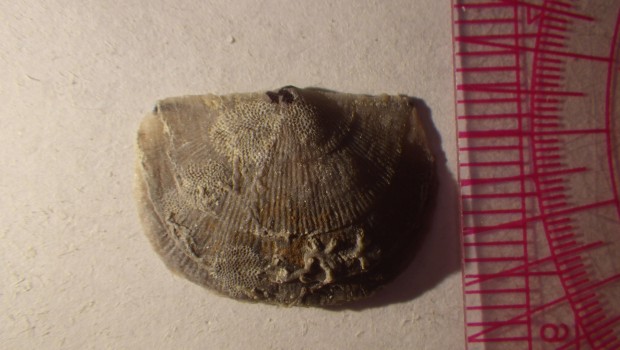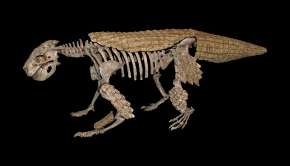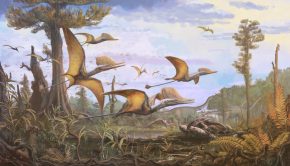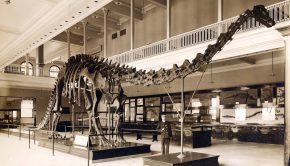Episode 46: Understanding Biodiversity
The world is currently undergoing a massive biodiversity crisis, and many people have said that we are in the next major mass extinction event, with species going extinct each day. Unfortunately, we don’t currently understand what aspects control biodiversity, and how the past can help us understand the present and the future.
Associate Professor Lindsey Leighton of the University of Alberta discusses his work combining research of modern invertebrate marine fauna related to biodiversity and ecosystems with studies of the fossil record in order to further understand this problem.
Podcast: Download (Duration: 1:04:50 — 89.0MB)
This is Cancer productus, the Red Rock Crab, crushing and eating a mussel. You can see his little mouthparts moving really rapidly (this is actually a sign of good health for a crab). You also can see that they are pretty sloppy eaters. This mussel won’t be forming a repair scar… The crab is only a few inches below the surface of the water — he came right up to us while we were working in the intertidal at the Bamfield Marine Station (this actually was a pretty common occurrence). (Film by Cory Redman).
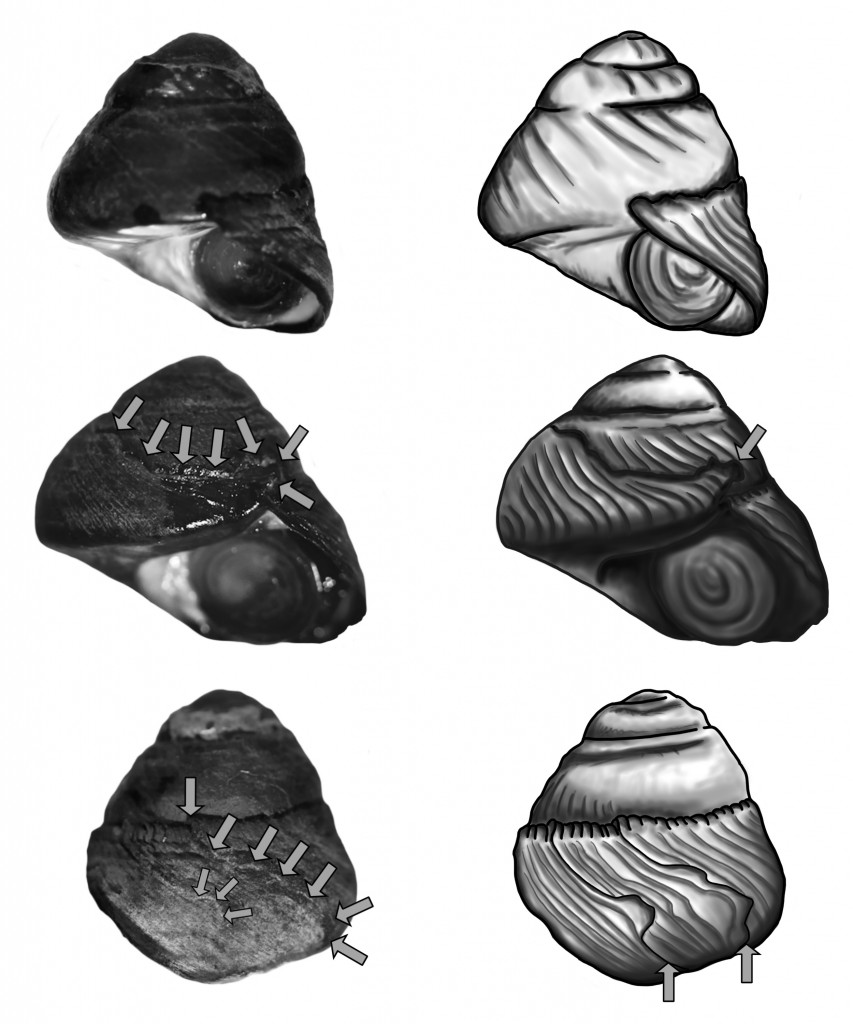
This figure shows three photos (left column) of Chlorostoma funebrale, the black turban snail, which is one of the most common gastropods living today in Puget Sound. Arrows point toward a typical repair scar. We’ve also provided three drawings in the right column of the same three specimens to illustrate the repair scars more easily. The top row shows a normal, uninjured snail, and the bottom two rows show two repaired snails. A crab would have attacked and peeled back the aperture of the gastropod, and these gastropods were fortunate enough to survive the attack and repair their shells. (Photos and illustrations by Darrin Molinaro)
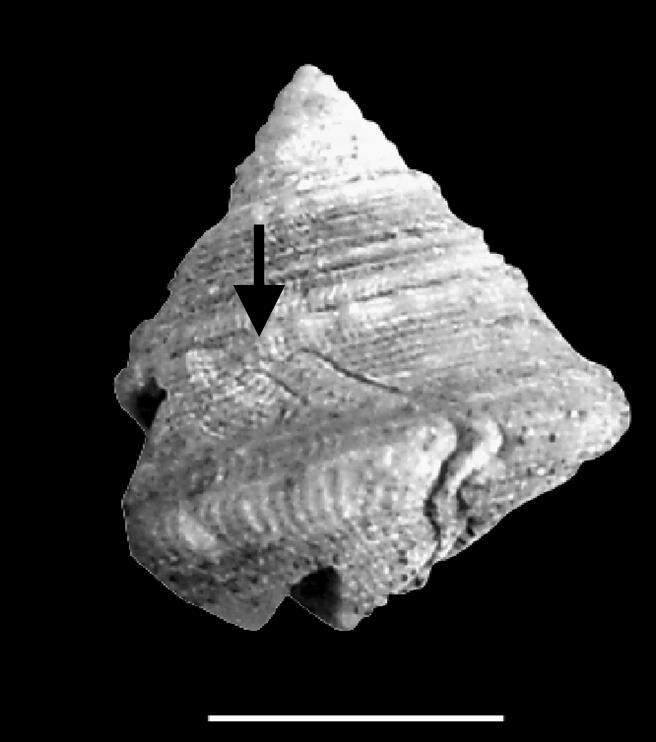
And here we have another gastropod with a similar repair scar — except this repaired individual is from the Pennsylvanian of Texas, and is roughly 300 million years old. Note the similarity of the damage. (Photo by Jennifer Sawyer)
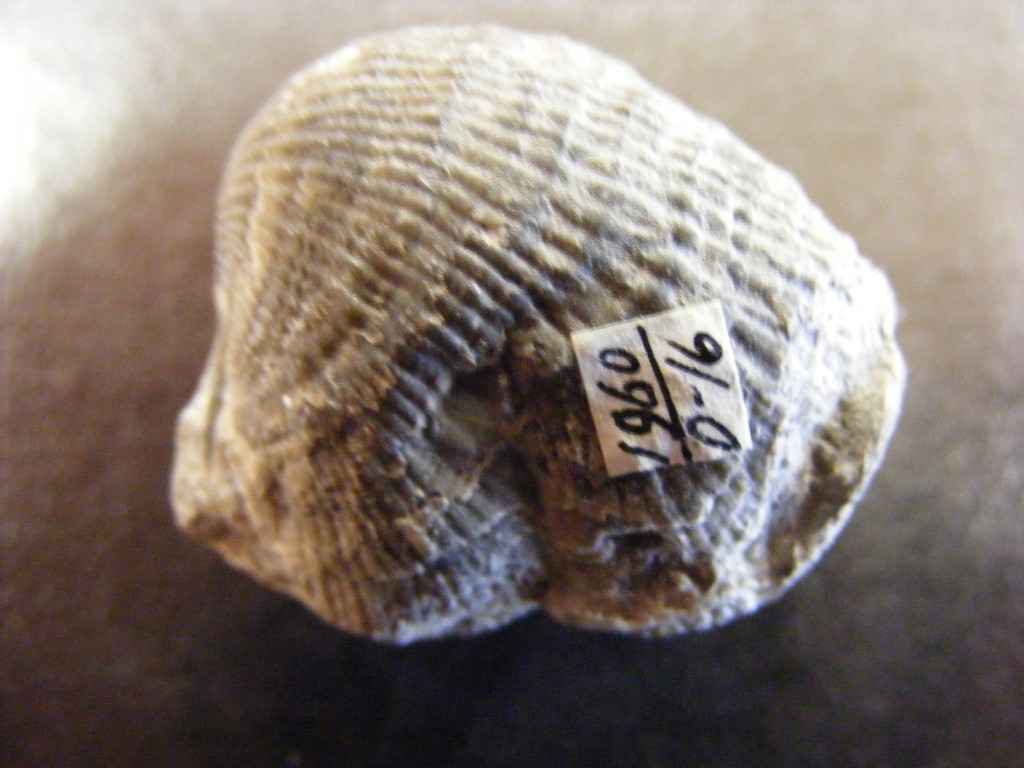
Gastropods are not the only victims of crushing attacks. This image shows a nice repair scar on a brachiopod from the Devonian of Michigan (roughly 385 million years ago) . The scar is the triangular puncture to the left of the label. Note how the animal changed the direction of growth of its shell to try to fill in the gap made by the damage. Brachiopods are bivalved animals that are only distantly related to modern bivalves (clams) even though they appear superficially similar. Brachiopods are relatively uncommon today but they were incredibly abundant and diverse in the distant past. (Specimen on loan from the Michigan Museum of Paleontology. Photo by Eilidh Richards)
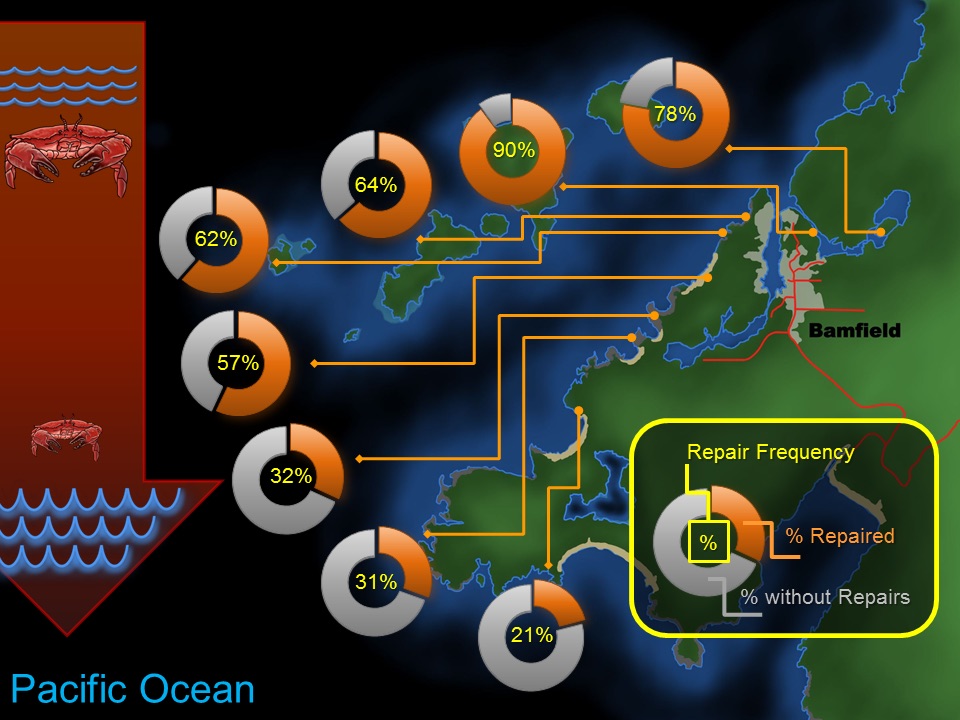
We ran a modern in situ study near the Bamfield Marine Station, BC, Canada to examine the relationship between repair scars, and crab attack frequency. If this works, we can use repairs as a proxy for attack frequency without having to observe attacks directly. We examined black turban snails (shown above), which are among the favourite prey of red rock crabs, along a gradient in water energy — as you move on the map from the northeast to the southwest, you are moving closer to the open ocean where there are larger and more frequent waves. Back to the northeast, the localities are increasingly protected from wave action by the local geography. In these quieter-water settings, crabs tend to be larger and more numerous, and so we would expect to see evidence of more attacks at the localities to the northeast. If our hypothesis is correct, and repair scars are a good proxy for attack frequency in general, then we also should observe greater repair frequencies in these quieter settings — and as you can see on the graph, that is exactly what we found. Repairs are more than three times as common on gastropods in the quiet settings to the northeast than at the most exposed, high-wave-energy setting to the southwest, and there is a nice gradient in decreasing repair frequency as you move toward the southwest. (Illustration by Darrin Molinaro)
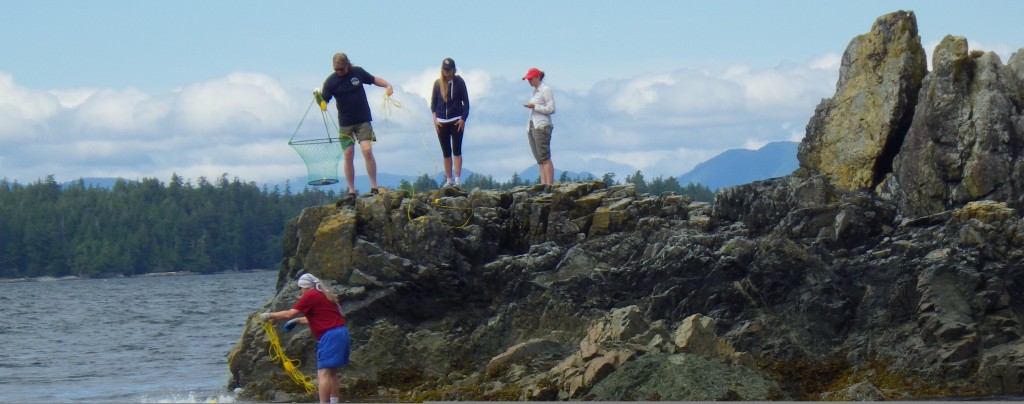
We’re using baited nets here to capture crabs for our crab census along the coast. The photographer caught me at the moment when I am wondering exactly why I, and not one of my students, is about to go waist-deep in the frigid water of Puget Sound. (Photo by Chris Schneider)
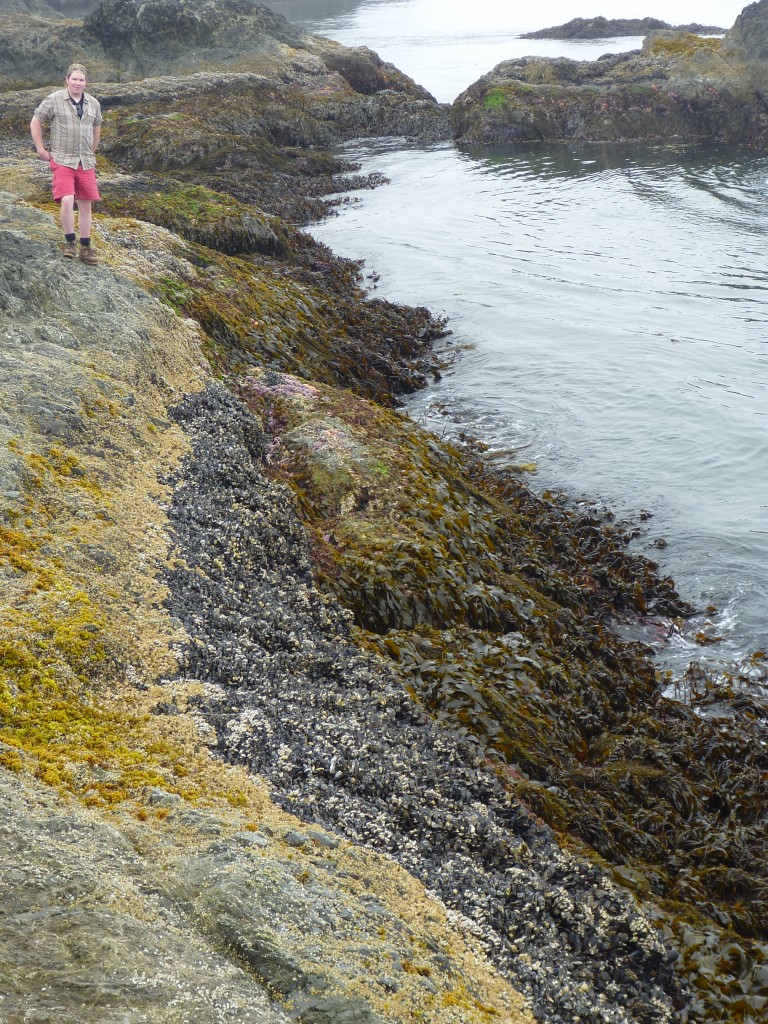
This is a nice shot illustrating the typical tidal zonation — different animals and plants live at different heights within the intertidal (note the change in organisms along clearly visible bands) at Bamfield. (Photo by Darrin Molinaro)
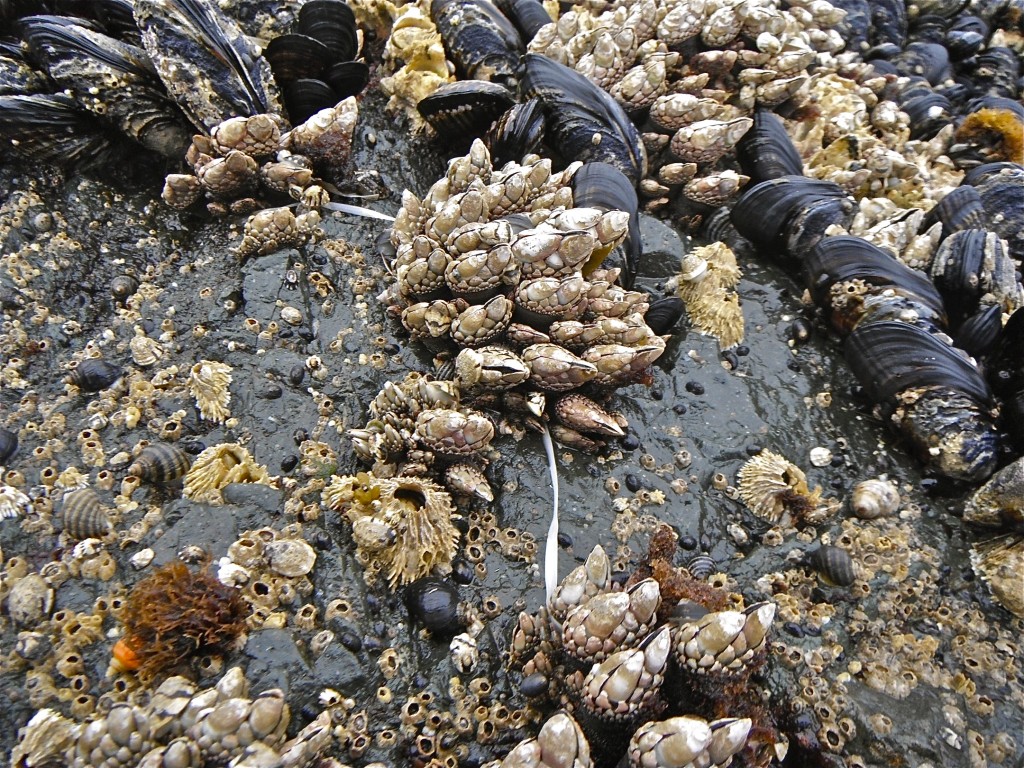
And this is a closeup from nearby of the upper intertidal showing some of the fantastic diversity of a relatively healthy ecosystem — gooseneck barnacles (the unusual-looking stalked organisms near the center of the photo), thatch barnacles, mussels, and some gastropods (Nucella ostrina, which likes to feed on the barnacles) among other taxa. (Photo by Darrin Molinaro)
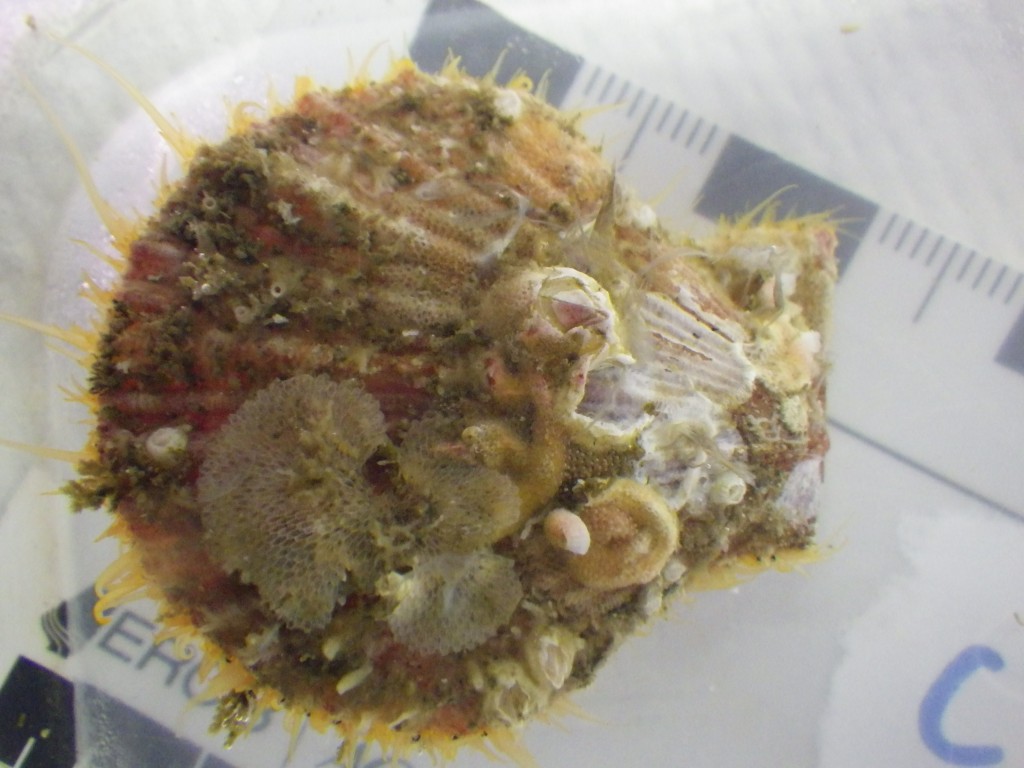
Another biotic interaction we discuss in the podcast is encrustation, in which one animal lives physically attached to another. Here we have a modern scallop, encrusted by barnacles and by some colonies of bryozoans (moss animals) — these are the sheet-like organisms living on the scallop that appear to have a checker-board arrangement of cells. Each of those “cells” contains a zooid, an individual living in the colony. Bryozoans often look like plants, but they are animals. (Photo by Chris Schneider)
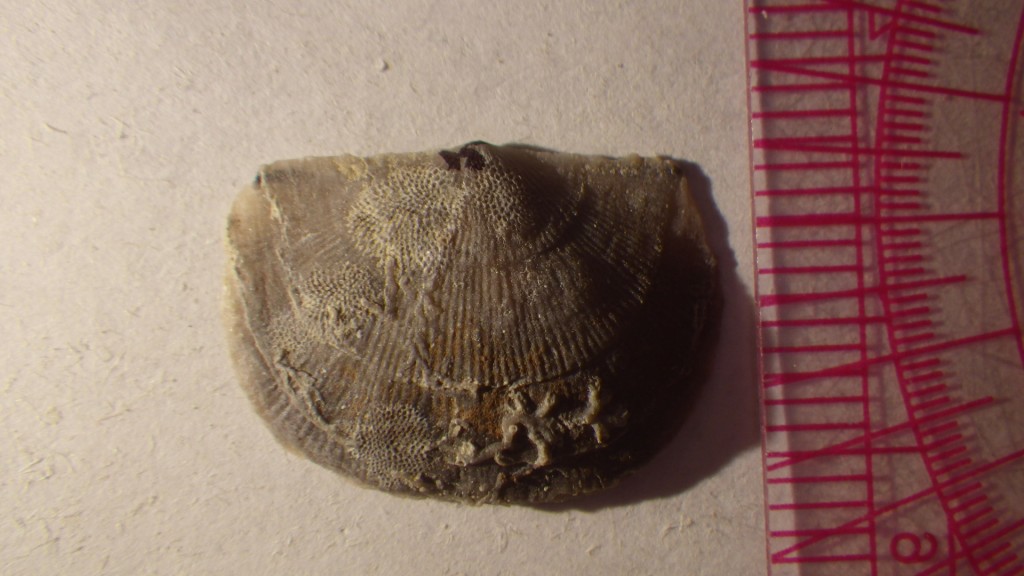
Once again, we can see the same sort of biotic interactions in the deep past. This Devonian brachiopod is encrusted by something that looks very similar to what we observed on the scallop — on the top centre and lower left of the brachiopod shell is a bryozoan colonies. (Photo by Chris Schneider)
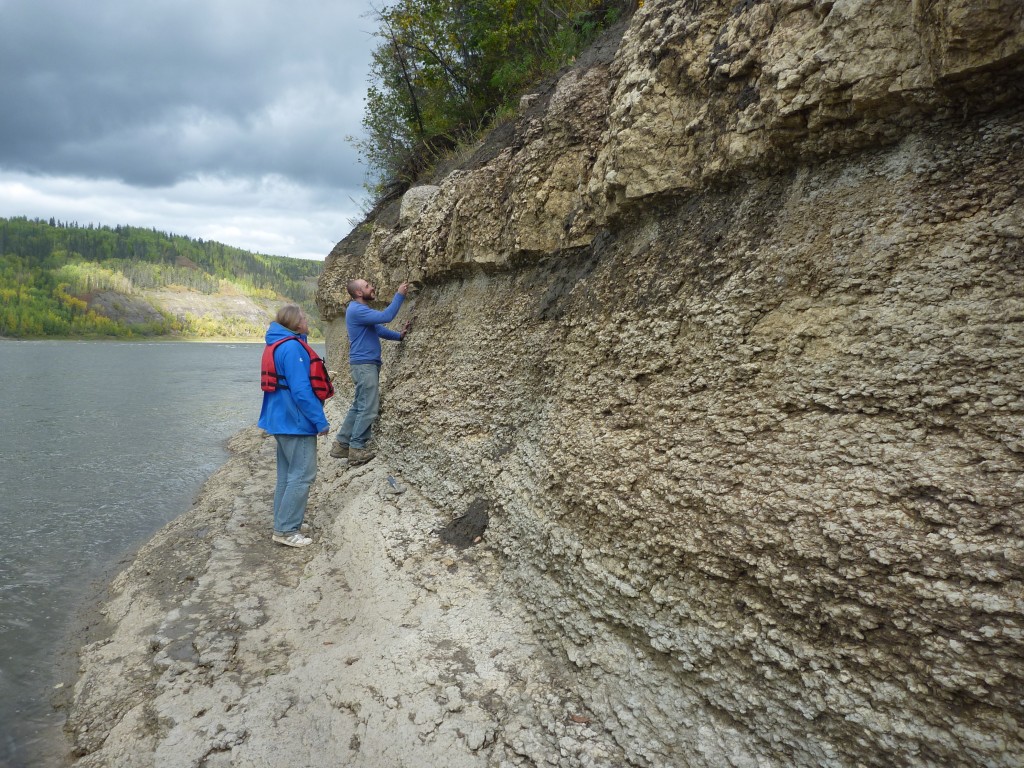
As I mention in the podcast, I like keeping one foot in the modern and one in the past. This is a shot of Frank Forcino (former PhD student, now faculty at Western Carolina University) and I working in the Waterways Formation in the Devonian of Alberta. (Photo by Chris Schneider)
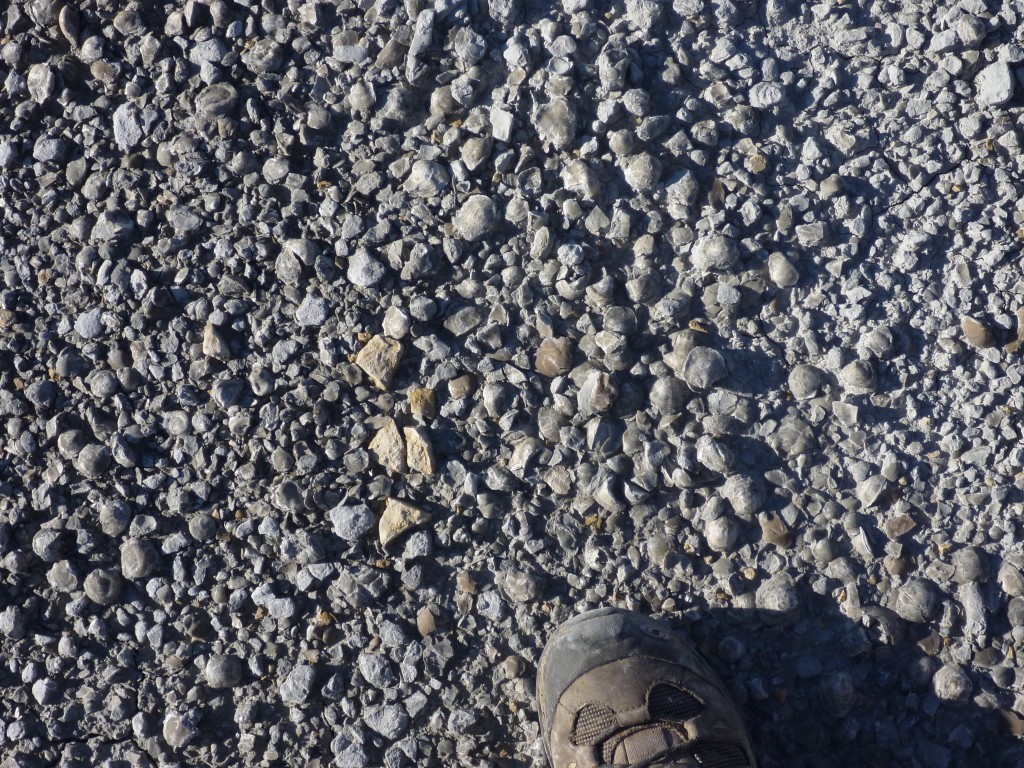
This is why everyone should want to work on invertebrates — this is what I call a “blindfold spot”. I could blindfold anyone, put them on their hands and knees on this surface, and they would collect several thousand specimens in an hour. All of those little round things down by that boot are Devonian brachiopod fossils waiting to be collected — they were that common. And that surface was about a half-acre wide. (Photo by Chris Schneider)
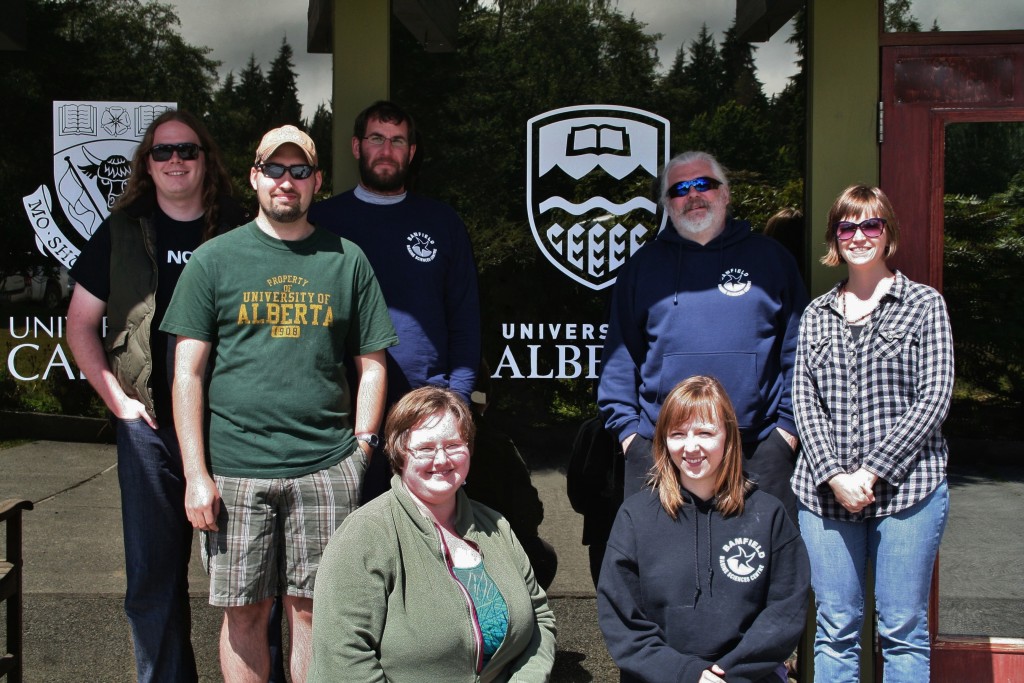
Lastly, these are the people who make all of this work possible — my students and postdocs: Kneeling, from left to right: Dr. Amelinda Webb, Kristina Barclay. Back Row: Ben Collins, Darrin Molinaro, Dr. Cory Redman, Dr. Lindsey Leighton, Emily Stafford (who got to put Dr. in front of her name shortly after this photo was taken). (Photo by Beth Rogers, Bamfield Marine Station)

